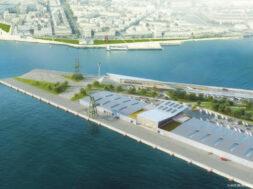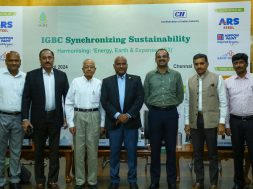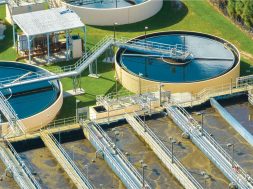Le Havre’s Cruise Terminal: A green and sustainable solution for development

Le Havre’s Green and Sustainable Infrastructure Project with Economic and Environmental Success.
The development of the maritime cruise market represents an excellent opportunity for economic and tourist development in Le Havre and the Normandy region.
The project is a great example of modern infrastructure, combining green and sustainable solutions with economic potential for Le Havre, whose current mayor is Edouard Philippe, former Prime Minister of France. Edouard Philippe was recently in India to push cooperation in ports, the blue economy, and ocean governance between France and India.
Sobriety and carbon neutrality
The contemporary climate challenges demand sobriety and carbon neutrality be prioritised in construction projects. The cruise terminal construction project faced the challenge of energy and ecological transition while minimising its environmental impact. The carbon footprint of a new building typically comprises four contributors, namely the production of materials and equipment (approximately 63 percent), energy consumption (about 32 percent), water consumption (about 3 percent), and the construction phase (about 1 percent). The project’s design focused on solutions to reduce the carbon impact of each of these contributors. It aimed to achieve E+C certification, a French label developed by the Ministry of Environment, beyond the regulatory framework.
As part of this environmental approach, the construction phase will be subject to a “Low Nuisance Construction Site” charter. Finally, at least 70 percent of the waste generated by the construction site and the demolition of existing buildings must be recycled.
Production of materials and equipment
To minimise the environmental impact of building construction, particular attention has been given to the production of building materials which is considered the most crucial moment in the life of any structure. To address this, several sustainable solutions have been implemented for the project. These include using low-carbon concrete, prioritising recycled steel, and incorporating wood elements in the terminal structure. Furthermore, the project prioritises using materials and equipment with known environmental profiles and whose carbon footprint is compatible with the project’s objectives.
Energy consumption and water management
Limiting the energy consumption of a building begins with a design that limits the use of heating, ventilation, cooling, and lighting equipment.
This is why the terminals are equipped with large glazed surfaces to benefit from solar gain in winter. In the summer, sunshades and high-performance glazing solutions are used to limit solar gain and prevent overheating of the interior spaces.
The insulation of the buildings has also been the subject of a thorough review to limit energy losses. At the same time, work on the albedo of the roofs will make it possible to limit the heat island effect in summer by using reflective materials.
The terminals will be naturally ventilated during both summer and winter. This natural ventilation will be controlled and monitored to adapt to the needs and guarantee optimal comfort.
Reversibility of the project
Increased security measures in transportation facilities have led to more security devices in cruise terminals. To anticipate future developments and make the terminal adaptable, the design process created a flexible functional and structural organisation. The project allows for new organisation of flows in the future by freeing waiting and control areas from structural constraints and preserving the possibility of extensions. Additionally, the project is designed with reversibility in mind, allowing for the rearrangement of interior spaces in several ways. The terminal is also designed for multiple uses, such as exhibitions, showrooms, and rooftop events, to ensure space is not left empty.
For more info visit : https://www.enia.fr/
Cookie Consent
We use cookies to personalize your experience. By continuing to visit this website you agree to our Terms & Conditions, Privacy Policy and Cookie Policy.










